Issue
- What are the reasons for introducing new EU energy labels?
- For which product categories will the new energy labels apply?
- When will the new energy labels become effective?
- What do the new energy labels look like?
- What are the consumer benefits of the new energy labelling?
- What does the Ecodesign Package mean?
Applies to
- dishwashers
- washing machines
- washer-dryers
- refrigerators (including wine cellars)
Resolution
In Summary
The European Parliament and Commission will retire the current A+++ labelling system in favour of a simplified A-G ratings system. Historically, the EU originally used an A-G system. The new labelling is more complex, with new performance items, stricter eco-design* requirements and new testing methods.
The new Energy Label is to be implemented in stores from 1st March 2021, but legislation foresees a “pre-phasing” period:
1. From 1st November 2020 manufactures HAVE to provide new & old labels inside each product coming to market.
2. Before 1st November 2020 manufacturers are ALLOWED to start to include a new label in the products
(operational simplification). By November 2021 trade has to remove any old labels from Displays and Stocks.
These changes mean that some products may now include the old and new Energy Label.
All products must have the old and new E-label for a four-month period from 1st November 2020 to 28th February 2021.
Further Details
1. To make energy labels more understandable for consumers and help them make better-informed purchasing choices, the European Commission adopted new energy efficiency labels covering the appliances mentioned above.
Since its introduction twenty years ago, the success of energy labelling has contributed to the development of increasingly energy-efficient products. This has made the current labelling system too complicated.
In 2017, the EU agreed clearer energy efficiency labelling rules, by moving from the current A+++ to G scale to an A to G energy scale, which is simpler and well understood by consumers.
2. In our products, new "rescaled" energy labels will be introduced in the following appliances:
- dishwashers
- washing machines
- washer-dryers
- refrigerators, including wine storage fridges
3. These new labels will be visible for European consumers in physical stores and online as of March 1st 2021
The new regulations will also apply in non-EU countries (e.g. Norway, Switzerland)
4. Depending on the product, the energy labels will display not only electricity consumption but also other energy and non-energy information, with intuitive pictograms, to compare products and perform a better-informed purchase choice: information about the water used per washing cycle, storing capacity, the noise emitted, etc.
A new element in these labels is a QR code with which consumers will be able to get additional, official (non-commercial) information by scanning the code with a smartphone. This data will become available to any European citizen in the next few months in the EPREL EU database.
(source: https://europa.eu/rapid/press-release_MEMO-19-1596_en.htm )
dishwashers, washer-dryers, washing machines
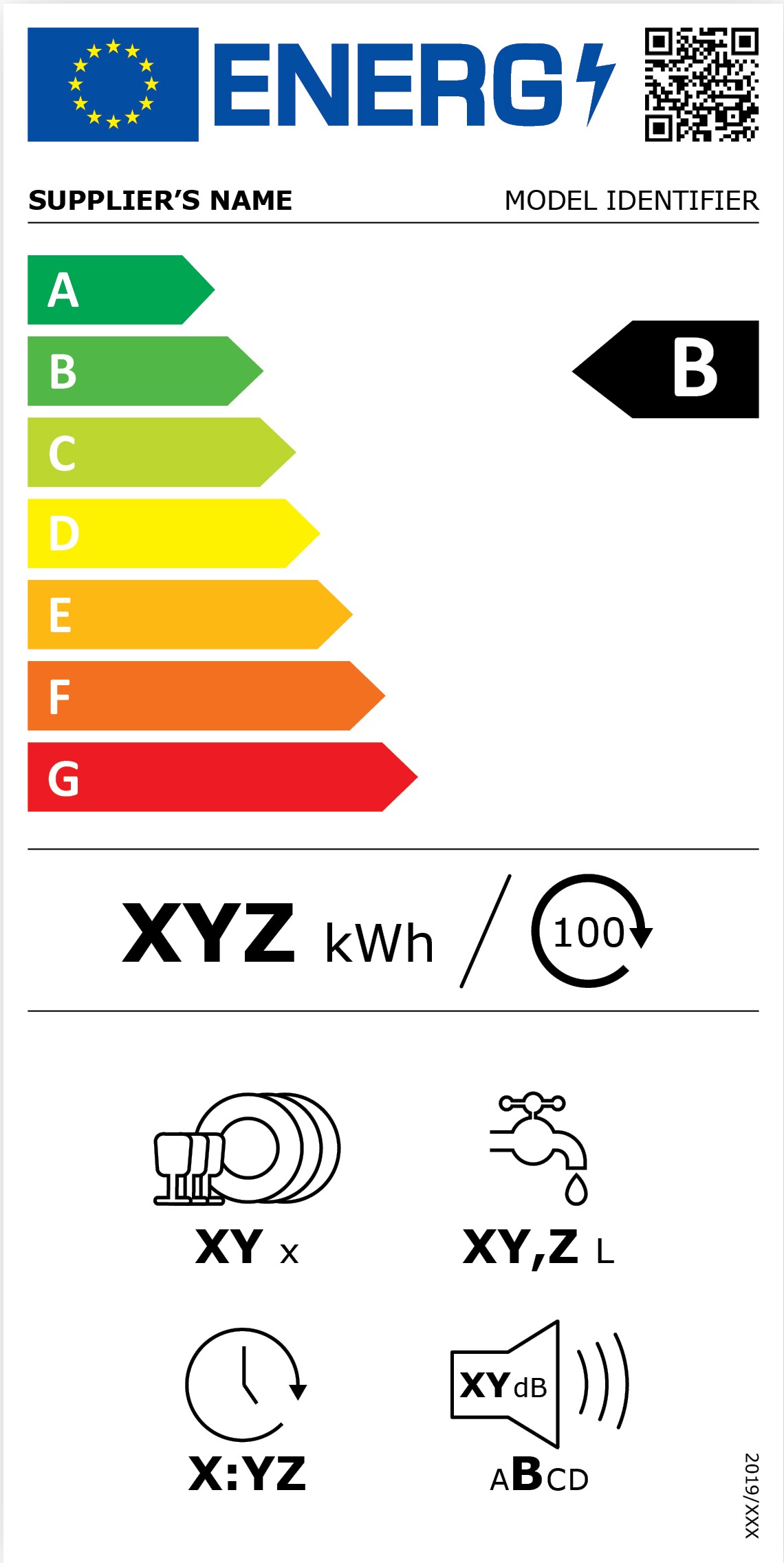
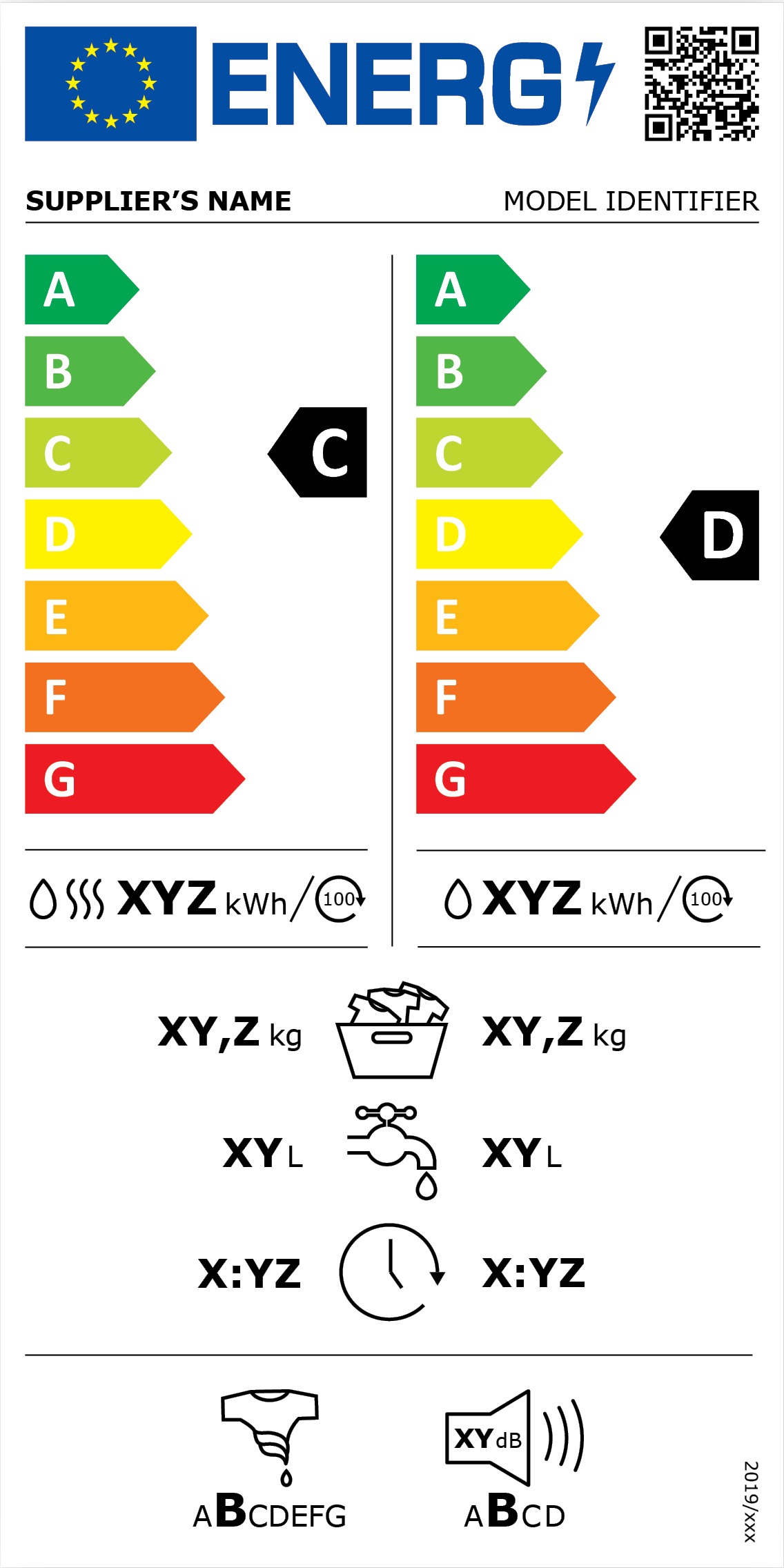
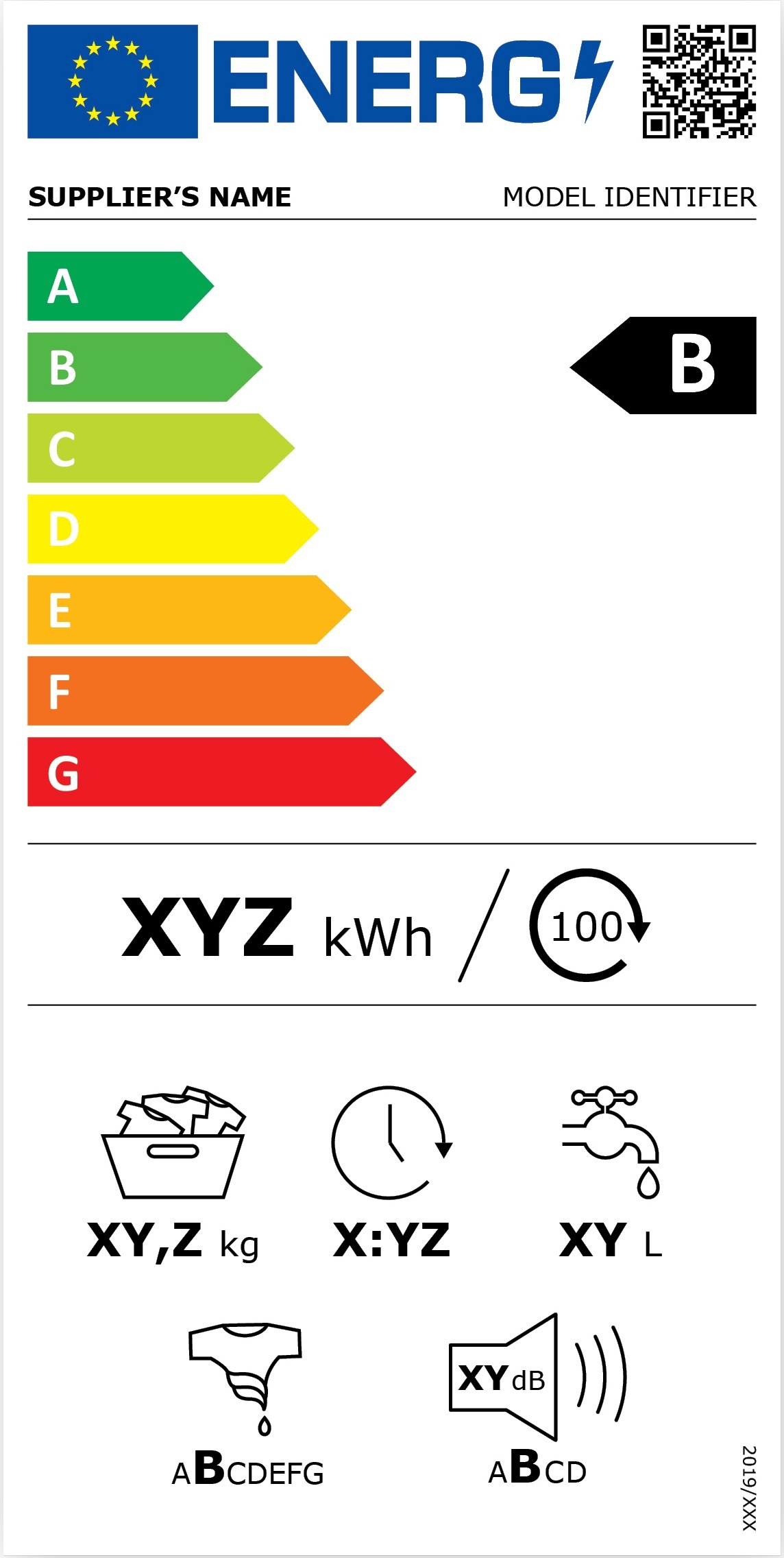
refrigerators, wine coolers
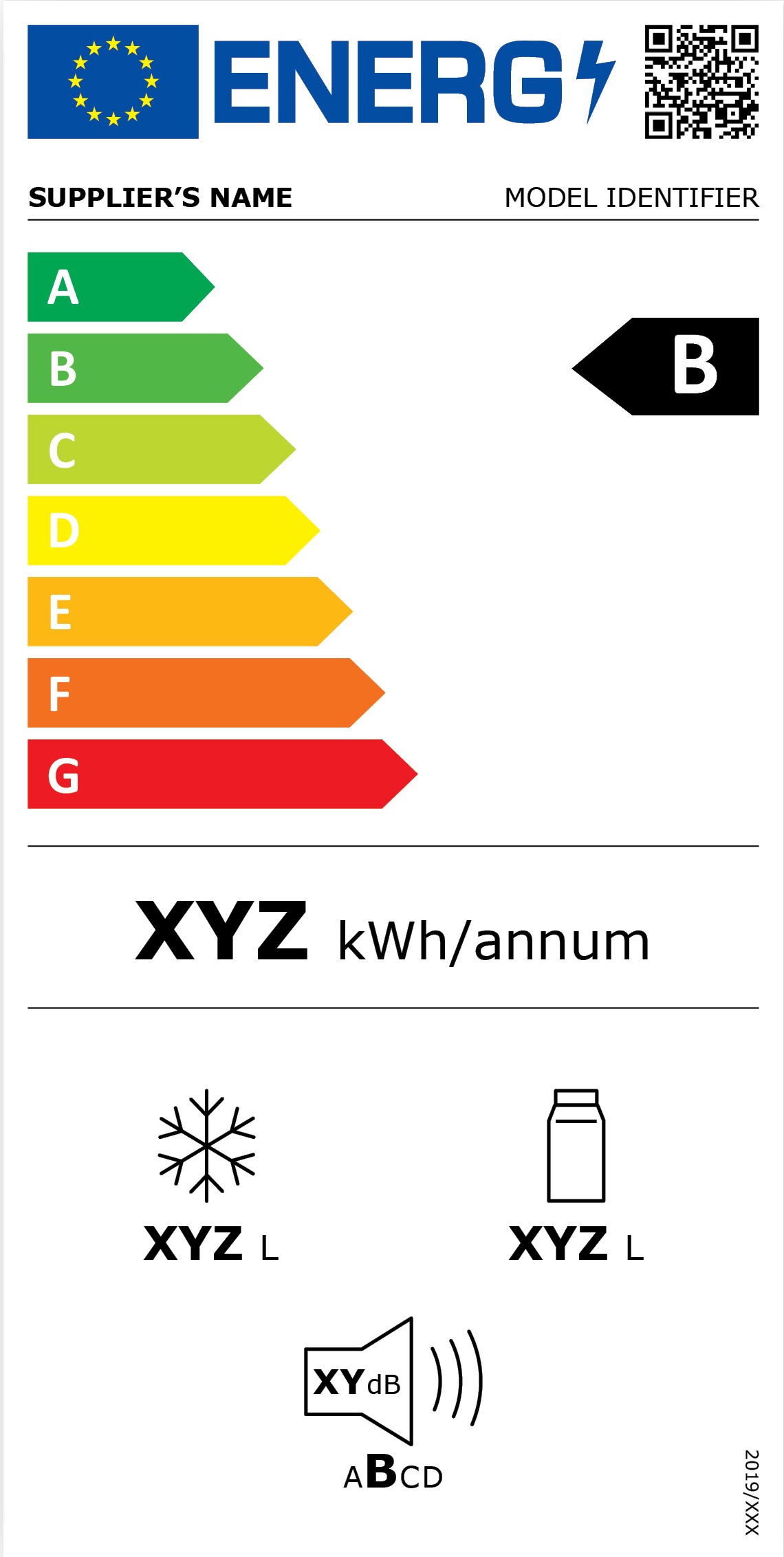
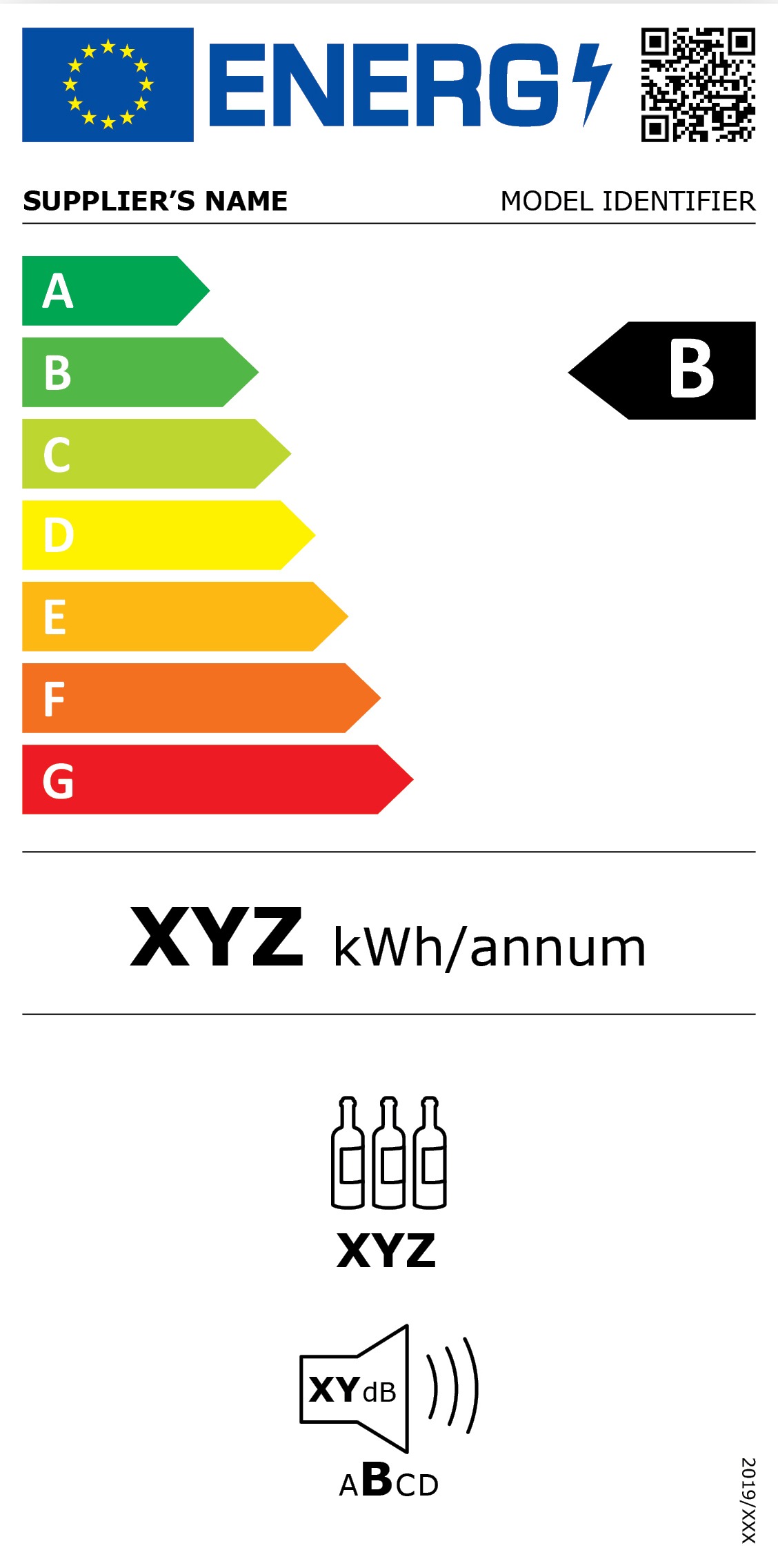
5. The European Commission estimations value the total annual final energy savings of these new labels by 2030 at 38 TWh/year, equivalent to the annual electricity consumption of Hungary. The Energy Labelling Package constitutes an important contribution to the EU's energy and climate targets.
6. Early July 2019, the Commission plans to adopt a set of 11 ecodesign regulations (the Ecodesign Package), covering the mentioned above product groups with the new labels and 5 additional product groups (for which no label is foreseen).
Ecodesign regulation tackle aspects complementary to the energy labelling, by setting minimal requirements on aspects such as energy use in standby, reparability, availability of spare parts or facilitating dismantling and recycling once the product will be at its end of life, thus supporting the implementation of the circular economy.
Altogether, this new set of measures is expected to bring additional annual energy savings by 2030 at the level of 94 TWh per year, more than the annual electricity consumption of Belgium and Luxembourg.
Since 1995, the EU Energy Label has proven to be a success: 85% of European consumers recognise and use it when purchasing. Although initially most of the models were in the lowest classes (i.e. E, F, G), new models deserved higher until the situation where today most are now in the top classes (A+++, A++, A+) and no product is now in the lowest classes. However, such a positive result now makes it difficult for consumers to distinguish the best performing products. The rescaling will improve understanding and coherence, thus facilitating consumers to correctly identify the most efficient products.
sources:
https://europa.eu/rapid/press-release_MEMO-19-1596_en.htm
https://ec.europa.eu/growth/industry/sustainability/ecodesign_en
https://ec.europa.eu/energy/en/list-regulations-product-groups-energy-efficient-products